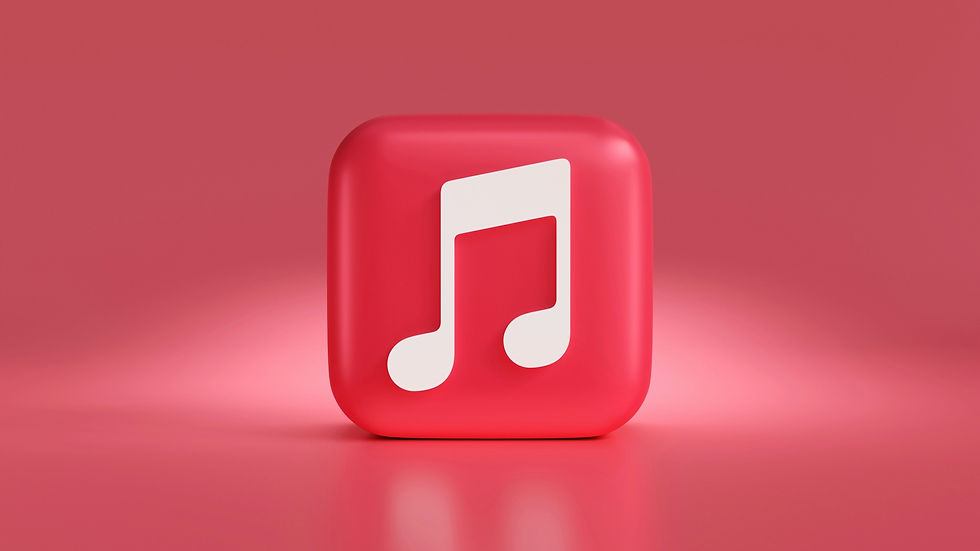There's A Big Shift In Music: Don't Miss The New Music Model?
- Legendary Mix

- 3 days ago
- 4 min read

There was a time when one song owned the summer. Everyone heard it in the club, on the radio, in commercials — from your little cousin to your grandma. Michael Jackson. Madonna. Jay-Z. Drake. We could all point at the same track and say, “That’s the one.”
That era? It’s gone.
Today’s music world is fragmented. The monoculture — that shared pop culture space where one artist could dominate everything — has been replaced by an interest-based ecosystem. Social media algorithms don’t show you what everyone is talking about. They show you what you are already interested in.
For artists, that’s a game-changer. It means your music can be massive in one bubble and completely invisible in another. But here’s the thing most people miss: this is the single best time in history to be independent.
From Monoculture to Microcultures
Think about how people discover music now. Spotify’s algorithm learns your taste and recommends artists you’ve never heard of — but who sound exactly like what you’ve been vibing to. TikTok will drop a song in your feed because you liked a similar track yesterday. YouTube suggests an artist with only 5,000 subscribers because their latest visual matches your watch history.
The result? Instead of one global conversation, there are thousands of smaller conversations happening at the same time.
This explains why someone can say, “There’s no song of the summer,” when in reality there are 20 different songs of the summer — each dominating its own lane.
For example:
In 2022, Steve Lacy’s “Bad Habit” was a cultural moment for TikTok’s alt-R&B crowd, but some rap fans didn’t hear it until it hit the Grammys.
Ice Spice blew up almost entirely online, creating her own bubble before crossing over.
Brent Faiyaz’s “Wasteland” didn’t rely on radio dominance — it thrived off dedicated R&B fans streaming it nonstop in their curated worlds.
These aren’t accidents. They’re products of an interest-driven music economy.
Why This is Good News for Indie Artists
In the monoculture days, you needed major label muscle to compete. Without a label’s budget for radio spins, MTV rotation, and national tours, your chances were slim.
Now? The playing field is flatter than ever. You can:
Upload your music to DSPs (Digital Streaming Platforms) and appear in algorithmic playlists next to mainstream artists.
Build a dedicated fanbase without spending a dime on traditional PR.
Target your ideal listeners directly with ads, TikTok content, and Instagram reels.
Hip-hop and R&B are full of artists who’ve proven this works. Look at Russ. He spent years dropping a song a week on SoundCloud, slowly building an audience without label backing. Or Tinashe, who left the major label system to independently release music that connected deeply with her core fans — freeing her from chasing radio trends.
These moves would’ve been nearly impossible in the monoculture era. Today, they’re blueprint material.
How to Win in an Interest-Based Music World
Here’s how you can thrive as an indie artist in this new landscape:
1. Find Your Bubble — and Own It
You don’t need everyone. You need your people.
Study your listeners. What other artists do they follow? What slang do they use? What visuals catch their attention?
Don’t try to sound like whoever’s #1 on Billboard. Sound like the favorite artist of your specific crowd.
Example: Larry June carved out a loyal fanbase by leaning fully into his smooth, hustler-lifestyle rap aesthetic. He’s not chasing Drake’s audience — he’s building his own.
2. Release Consistently
Algorithms love activity. Fans forget fast.
Drop music more often, even if it’s singles instead of full albums.
Use each release to test new sounds, cover art styles, or marketing angles.
Example: Russ’s early success came from relentless consistency — proving that output matters as much as talent in grabbing attention online.
3. Use Content as Your Currency
You’re not just releasing songs; you’re creating moments.
Post behind-the-scenes studio clips.
Share short live performances, freestyles, or stripped-down R&B versions of your tracks.
Turn verses into TikTok-friendly snippets.
Example: Flo Milli leveraged short, personality-packed videos to make her music unavoidable on social media.
4. Collaborate Within Your Niche
Collabs aren’t just about bigger names — they’re about shared audiences.
Work with artists in your lane who have overlapping but not identical fanbases.
Exchange features, share content, or do joint livestreams.
Example: Smino and JID have collaborated multiple times, each time expanding their reach without sacrificing their individuality.
5. Invest in Sound Quality
With so much music out there, average quality is invisible. Your track has seconds to hook a listener before they swipe.
Professional mixing and mastering can make your song pop in any playlist.
Competing with major-label sound isn’t optional — it’s expected.
When your song hits the right bubble, you want it to hit hard. That’s how casual listeners turn into dedicated fans.
The Bottom Line
The monoculture is gone, and that’s a gift. In its place are thousands of thriving microcultures, each hungry for new music that speaks directly to them. The gatekeepers who once decided who could be heard have lost their monopoly.
If you’re an independent hip-hop or R&B artist, this is your moment. The right sound, consistent content, and a clear focus on your niche can put you in the center of your own “song of the summer” — even if the rest of the world hasn’t heard it yet.
Your career doesn’t need to be built for everyone. It needs to be built for the right ones. And in 2025, that’s the fastest route to winning.








Comments